Summer is finally here! The summer hiking activity is an entirely different experience. Clothing needs to change. What to wear hiking in summer, you may ask? We have you covered.
Summer is lovely but can also come with grave issues when you are active in the great outdoors.
Hot weather hiking in summer is one summer activity you need to get prepared for. For wintertime, read our mountaineering tips for beginners.
Deal with warm weather during your hiking by being adequately prepared.
Your pace and gear will change due to climate conditions.
You need to be 100% prepared.
Summer hiking has some hidden dangers. Knowing how to walk under heat is a skill to be developed to enjoy and not to suffer.
What to Wear Hiking in Summer?
We will share a range of useful mistakes and tips many do in summer hiking activities, and thus you will be ready to get out there.
Heat is not an obstacle when you are well prepared, and you can enjoy the lovely hiking experience all summer long.
Tops for Hiking in Summer
A phrase many times said out loud: It’s hot, lets remove some clothes!
That is a mistake! Many think that to get more refreshing or -at least- not to get hotter, it is better to remove t-shirts and all in reality that is far from the truth.
The more the naked body is under the hot sun, the worst it gets.
That doesn’t mean that we need to wear heavy clothing. A shirt is excellent, or a light-colored t-shirt (light color reflects sunlight) will do the job against sun-rays.
Part of the summer hiking clothes you need to wear are ones with UV protection materials that block UV rays (enough). Usage of sun protection creams/lotions, adds up to that. Choose UPF-rated clothing (ratings include UPF 15, UPF 30, and UPF 50+.)
A more “technical” blouse with long sleeves, helps your body to maintain proper body temperature in a more chill and healthy level.
At the same time, it releases wick moisture (from sweating), while letting your body “breath.”
Ever seen people in countries like Africa wearing long shirts with long sleeves? There is a reason for that.
You can choose to wear short sleeve clothes too, but do apply sun cream on your arms to avoid sunburn.
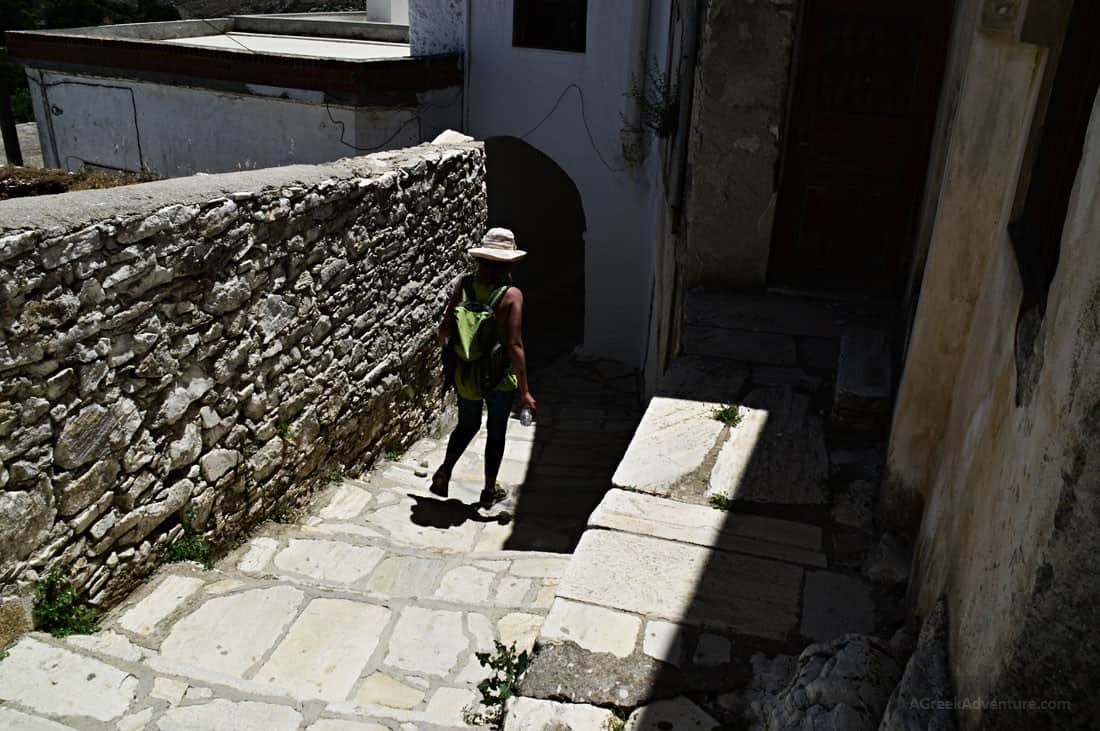
Apply sun cream to all exposed parts of your body. Did you know that many get sunburn on their ears and/or neck as it is one part not covered by hats?
Do apply suncream on your nose too, when you were sunglasses. The reflection from the sun on them, adds up to the power of rays hitting on your nose.
Finally, here is a mantra to repeat: “Wear a hat! Don’t go under the sun without a hat!” (repeat 20 times and wear a hat).
Your Pants When Hiking in Summer
The same happens with summer hiking pants.
Choose summer hiking pants where you can remove part of the legs area with a zipper and turn them into shorts.
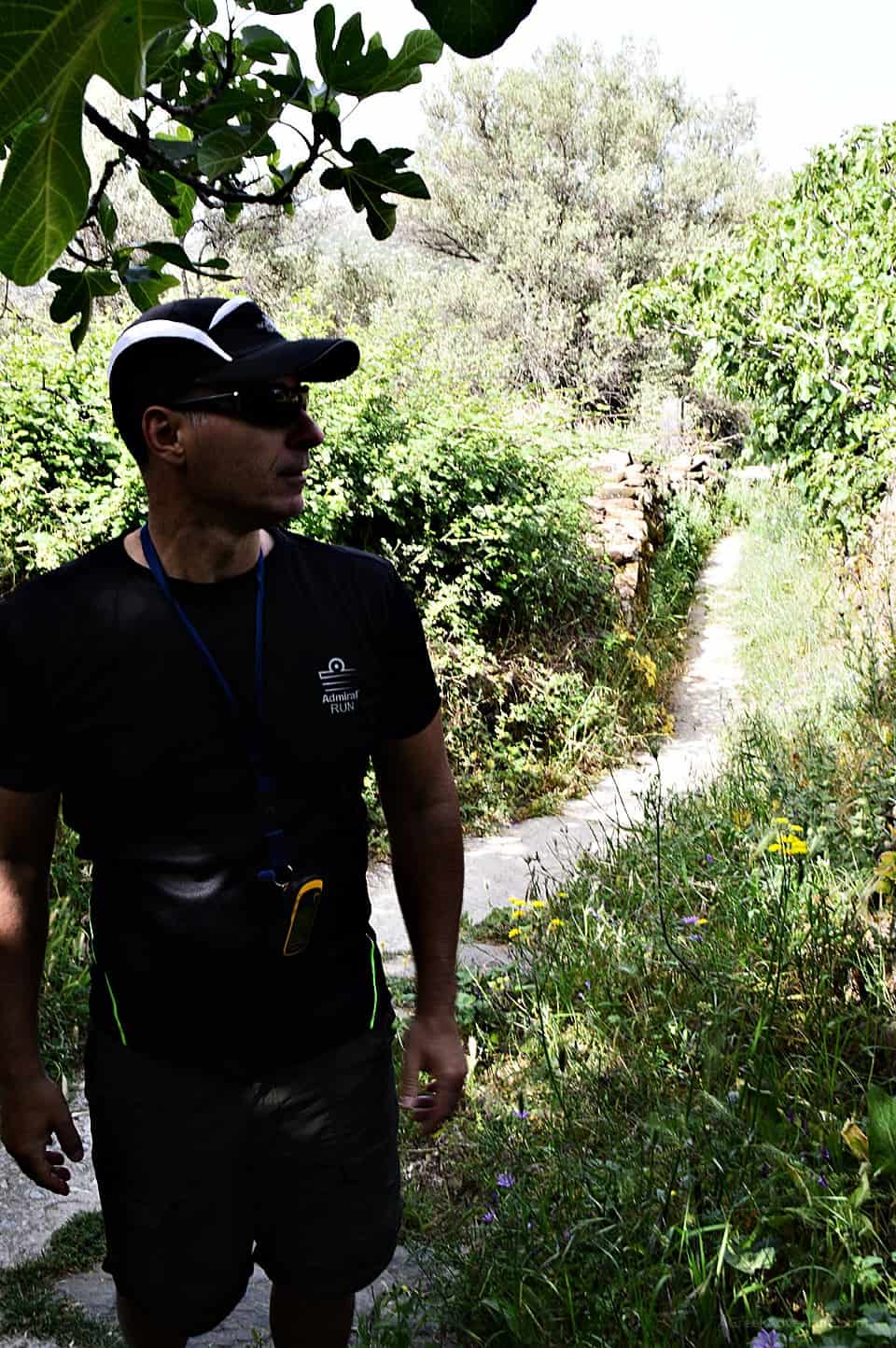
These come helpful, and you have 2 in 1 when you want to “slip into” something more refreshing.
Such pants are from unique lightweight material that allows your skin to breath.
Summer hiking pants dry fast even after soaking them into water and moisture from sweating “escapes” in the same way.
They are not like regular pants. See the top for men and women.
Some prefer to wear hiking leggings as they are more comfortable. Read our post on how to choose the best hiking leggings.
Hats for Hiking in Summer Season
We have a whole article dedicated solely to hiking hats. Hiking hats are an absolute necessity. If you enjoy hiking in the sun, then it’s time to invest in a good hiking hat.

There are many different types available, so no matter what activity you are doing while wearing one of these hats, there is something for everyone!
Most hiking hats are suitable for other than hiking activities. You can also wear them while canoeing or sea kayaking, or while you walk down the city.
Shoes & Socks for Hiking in Summer
On a hot day, keep your feet dry. You need to wear socks and shoes that permit proper ventilation.
Your socks must not be wet (don’t dip them in water). Wet socks in warm shoes or poor ventilation lead to blisters.
Make sure your socks are made from excellent material (not cotton) and are not too thick.
Make sure your shoes allow air to circulate, and your feet feel comfortable on them, not too tight or loose.
Avoid waterproof boots & shoes during summer hiking.
They block ventilation and keep all the moisture and heat inside the shoe. That will lead to excessive sweat.
Better test your shoes and socks before your hiking during some short hikes or around the house.
Depending on the terrain, a nice pair of trail running shoes can do the job so that you can be comfortable, lightweight, and with a good grip on the ground. Check these shoes.
Plan Your Water for Hiking in Summer
You can’t imagine how many plan poorly their water intake strategy during summer hiking. Many end up without water during the first hour of their hiking time.
Others consume all the water too fast, so to spare the weight of their flask/water bottle.
Most don’t search to see if there is a water supply along their hiking tour, especially when such takes many hours to finish.
The result is inadequate water intake. During summertime, this can lead to fatigue, feeling sick, and are prone to micro-accidents.
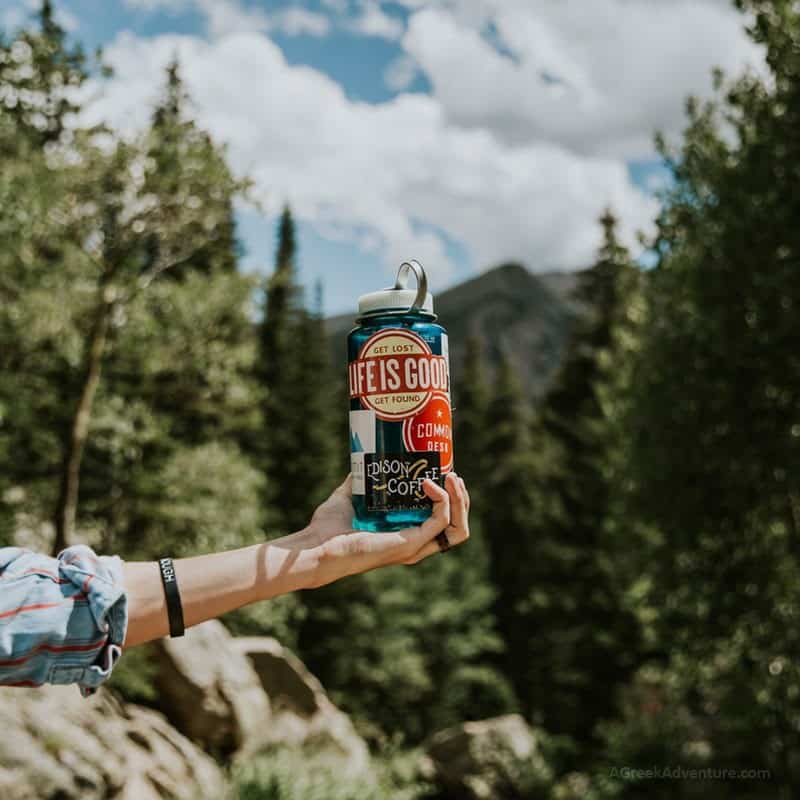
Many people lose their water by not placing their bottles correctly in their backpack (and thus spill it along the way).
The majority think that they need to stay hydrated correctly only on the hiking day. That is wrong, especially in multi-hour hikes.
Proper hydration started a few days ago, and if you hike for many hours/days under the sun, you need to continue appropriate hydration after completing your hiking trip.
In that way, you can reduce how much water you have to carry (depends on the route and difficulty and weather conditions) as your body is ready to cope with the heat in a better way.
Some energy gels or drinks full of electrolytes (i.e., salt capsules) can be beneficial on a long hike under hot conditions.
Get Wet While Hiking in Summer
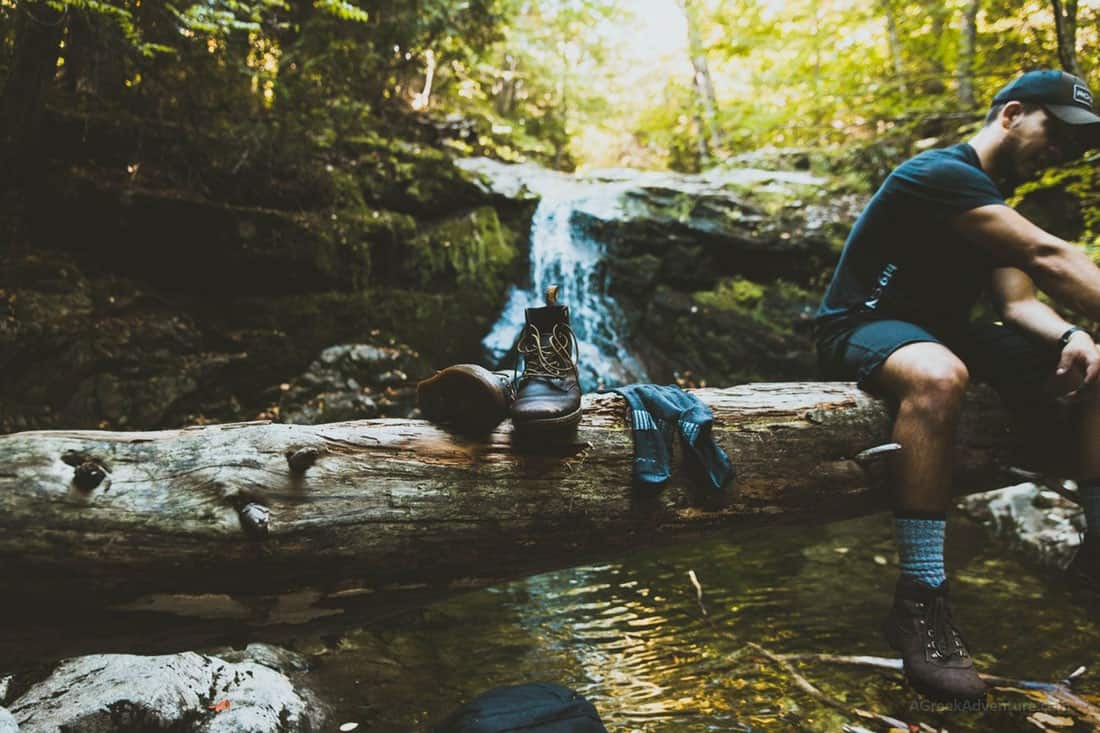
That will make you apply sun cream a little bit often, but it is a wonderful way to deal with heat.
Hikers simply dip their hats, scarfs, bandanas, shirts, shorts/pants in water, and just wear them.
On a hot day, these will dry up fast. Keeping your neck fresh is a lifesaver.
Have you ever seen these far-west movies where the cowboy dips their scarf in water and wears it around the neck?
That’s the case. Be that cowboy!
Do the same with pouring water over your head. Just make sure you don’t use icy water on a “heated” head.
The water has an evaporative cooling effect while providing you with the necessary temperature reduction protecting you from heat exhaustion or symptoms of heatstroke.
Body for Hiking in Summer: Make it, Don’t Break it!
You need to adjust your body for heat.
Have you ever noticed that during the first summer days, we feel them far hotter than the next ones?
The same thing happens during the first cold days in winter. Your body needs to adjust.
Your body is not accustomed to the “new” temperature conditions, and you must allow a few hikes to adjust and deal with that change.
A big mistake done by many is believing that their body will react in the first days of summer as if it was in the last days of the previous summer.
Many hikers don’t allow this transition, and they suffer.
Especially weekend hikers tend to rush things up.
How to adjust for hiking in the summer?
Start with small and easy routes under shade. Another “trick” is to spend 20 to 30 minutes in a sauna.
That will tune up your body for the upcoming summer heat during your hiking.
Which Hiking Routes to Choose When Hiking in Summer?
Many hikers believe that heat is the same on any day in summer hiking.
That is not correct.
Heat, along with humidity levels, change depending on location and existing conditions.
Many routes/paths and trail mixes do not “respond” in the same way during hot days, even months.
Some of these paths are better to hike through during early morning time, while others during the afternoon.
It is best to avoid high temperatures timeframes.

You need to keep a note of the places you want to hike and get information about weather conditions and their difficulty level.
Most national parks have websites with lots of valuable information.
Weather conditions “intelligence” is not limited to your hiking day but for the days before and after that day.
If there was rain, some locations trap humidity, and with a burning sun, they get to the “sauna” level.
The opposite happens with periods where the temperature is lower. Some routes become easier to hike during such.
Essential tips on Hot Weather Hiking
If you feel your mouth sticky, it means more than you are only thirsty for “some” water…
It is a sign that your body is severely dry, and you need to act urgently.
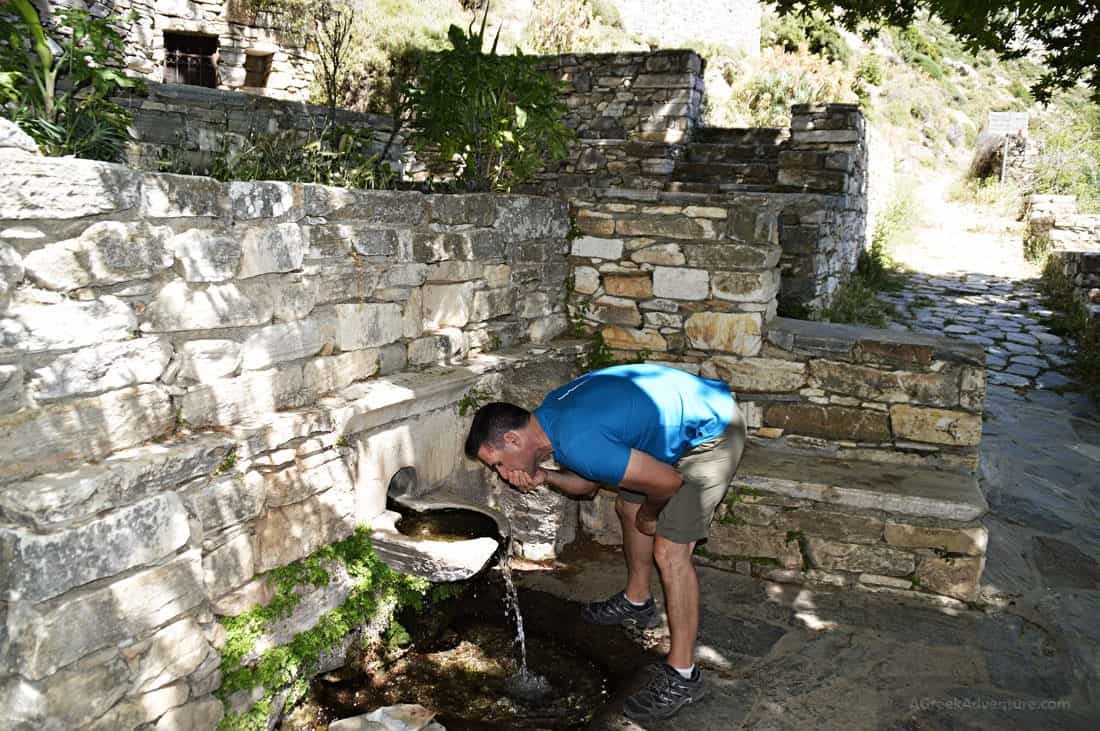
Don’t drink large portions of water along your hike (depends on body weight and conditions).
Better to consume some every 15-20 minutes and no more than the amount that leaves your body through sweat.
If you drink lots of water in a fast manner, you may notice that you immediately get sweaty, especially if the water is cool to cold.
That is a defensive mechanism of your body, and you don’t need to do it like that.
A brimmed hat is an excellent solution for hiking with hot weather, as it protects your neck along with your head.
Have a salty snack with you. It may sound weird, but salt can help you if you feel dizzy.
Make sure you have enough water to consume around 1 liter of water every 2 hours.
If possible, do not go alone. It is best to have fun and be safe along with a hiking partner.
Choose Your Hiking Time Wisely
In hot and dry conditions with no shade, it is better to hike early in the morning or late afternoon.
Start no later than 11:00 am and plan to get some rest under the shade and -preferably- near water.
As mentioned, proper planning and knowledge of the terrain are crucial for your well-being during your hiking in the summer.
During your break (12-1 pm), eat your main lunch but not a heavy one with lots of fats. That will provide you with the necessary energy to complete your hiking.
Walking under shade (at least for most of the part) is a must for both directions.
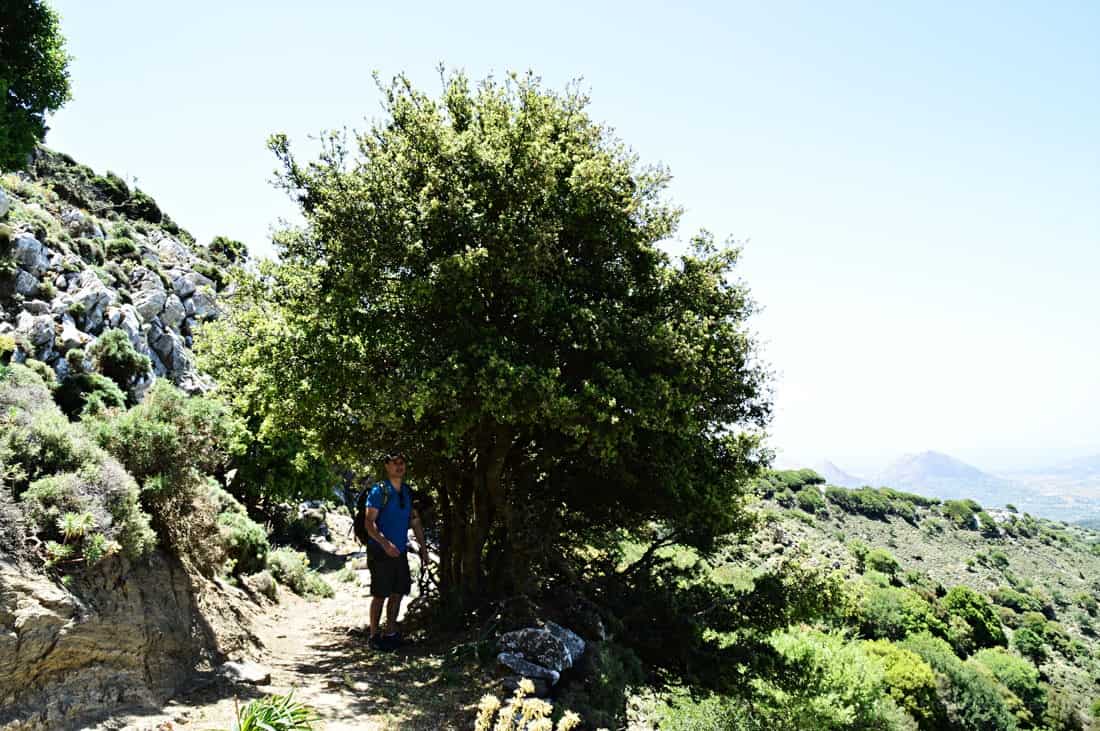
Following such simple instructions for your gear and conditions allows you to enjoy hiking in summer with the least possible trouble.
Heat needs not to be an obstacle to stop us from hiking, but just another thing to handle.
Enjoy your hiking in summer and all year long!
Also read:
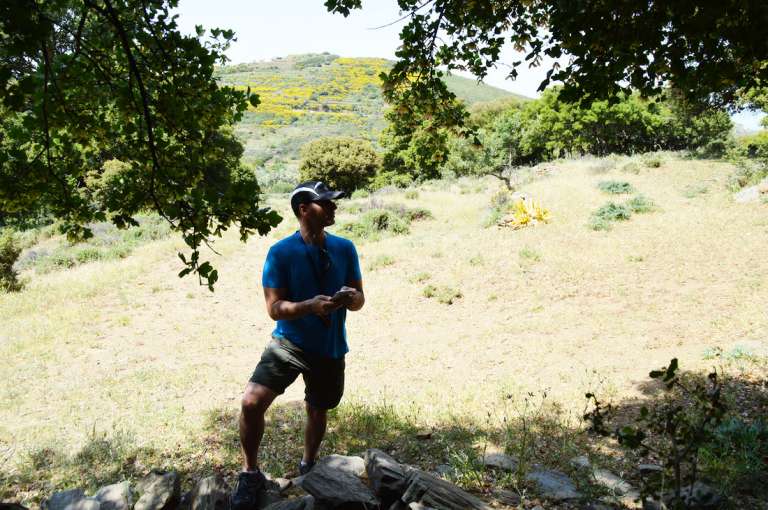
Hi buddy,
Hiking tips you give really amazing. I read your post and point out some significant issues. Great work, thanks for sharing your awesome work.
Thank you.